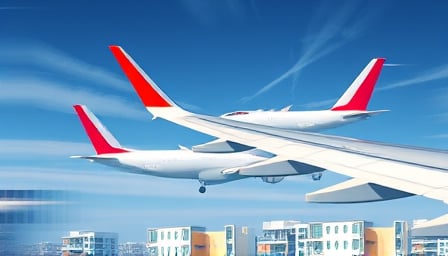Air New Zealand’s Financial Turbulence: A Closer Look at the Latest Results
In a turbulent financial landscape, Air New Zealand Limited has reported a 15% fall in annual profit, a development that has sent ripples through the aviation sector. Despite this downturn, the airline managed to post a smaller-than-expected drop in earnings, a testament to its resilience amidst global challenges.
Financial Highlights and Challenges
For the financial year ending June 30, 2025, Air New Zealand reported earnings before taxation of NZ$189 million, a decline from NZ$222 million the previous year. The net profit after taxation stood at NZ$126 million. This performance, while below expectations, was cushioned by the airline’s strategic maneuvers, including a share buyback program amounting to $38 million and a final unimputed ordinary dividend of 1.25 cents per share.
However, the airline’s operational capacity faced significant headwinds, with a 4% reduction in Available Seat Kilometers (ASK) capacity. This was primarily due to the grounding of up to 6 narrowbody and 5 widebody jets, a direct consequence of global engine maintenance issues that have plagued the industry.
Market Reaction and Strategic Moves
The market has reacted with cautious optimism to Air New Zealand’s financial results. The airline’s proactive measures, such as the share repurchase and dividend declaration, signal confidence in its long-term strategy. However, the warning of a weak start to the 2026 financial year underscores the challenges that lie ahead.
In contrast, EBOS Group Limited, another player in the industrials sector, delivered a solid FY25 result, with underlying revenue growth of 12.0% to $12.3 billion. This juxtaposition highlights the varied fortunes within the sector, with EBOS capitalizing on strong execution and strategic investments.
Global Partnerships and Expansions
Amidst these financial challenges, Air New Zealand continues to forge strategic partnerships and expand its global footprint. The airline’s collaboration with UATP to enhance digital payment reach in the Asia-Pacific region exemplifies its commitment to innovation and customer service.
Furthermore, the announcement of EGYPTAIR’s partnership with New Terminal One at JFK underscores the dynamic nature of the aviation industry, with airlines continuously seeking to enhance the travel experience and expand their networks.
Conclusion: Navigating Through Turbulence
Air New Zealand’s latest financial results paint a picture of an airline navigating through turbulent times with strategic foresight and resilience. While the challenges of global engine maintenance issues and a weak start to the next financial year loom large, the airline’s proactive measures and strategic partnerships offer a glimmer of hope.
As the aviation industry continues to evolve, Air New Zealand’s ability to adapt and innovate will be crucial in determining its trajectory. The coming months will be telling, as the airline seeks to stabilize its operations and chart a course towards recovery and growth.
